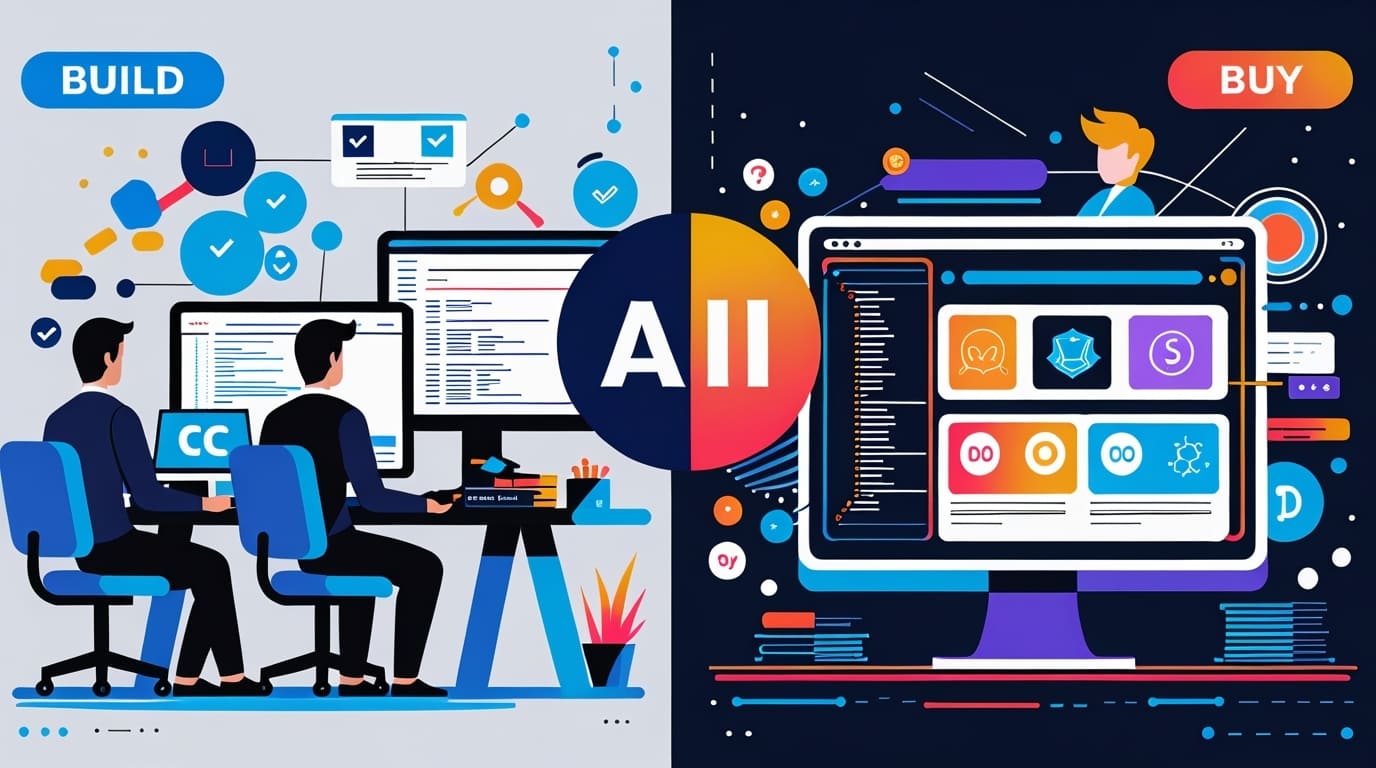In today’s fast-paced digital landscape, ensuring your mobile app operates flawlessly is a top priority. However, transitioning to mobile app support and maintenance can often lead to frustration and downtime — complications that can affect user experience and brand reputation. Are you ready to take your app to the next level? What if you could avoid downtime entirely? That’s where a well-planned migration strategy comes into play. This article focuses on mobile app support and maintenance, providing insights that will enable you to migrate seamlessly, safeguarding your app’s performance throughout the process.
Understanding Mobile App Support and Maintenance Tools
To effectively execute a migration strategy for your mobile app support and maintenance, it’s vital to understand the tools available. These tools not only assist in maintaining current app performance but also aid in a smooth transition.
Types of Mobile App Support and Maintenance Tooling
There are several tools designed for mobile app support and maintenance, each serving distinct functions:
- Monitoring Tools: Solutions like Firebase Crashlytics help track app performance and crash reports, allowing for real-time diagnosis.
- Analytics Tools: Platforms such as Google Analytics for mobile apps collect user engagement data, helping gauge app usability and identify areas for improvement.
- Version Control Systems: Git is essential for managing different versions of code and facilitating collaboration among developers.
- Bug Tracking Software: Tools like Jira allow teams to log, prioritize, and fix issues, reducing response time to user problems.
- Testing Frameworks: Appium helps in performing automated testing, ensuring that any new updates do not introduce new bugs.
By utilizing a combination of these tools, companies can enhance their app maintenance and streamline the support process significantly.
Choosing the Right Mobile App Support and Maintenance Tool
Selecting the optimal tooling for mobile app support and maintenance requires careful consideration of various factors:
- Team Expertise: Evaluate whether your team is familiar with the chosen tools.
- Integration Capabilities: Tools should easily integrate with your existing systems and workflows.
- Specific Needs of the App: Different types of apps may require specialized tooling. For instance, a video streaming app may need powerful monitoring tools that can handle large data loads effectively.
Popular tools like New Relic for performance monitoring and Slack for team communication also play an essential role in streamlining the support process. By prioritizing these factors, you can select tooling that aligns best with your specific needs and operational capabilities.
Assessing Your Technology Stack for Support and Maintenance
Understanding the technology stack that powers your mobile app is key to effective support and maintenance.
Importance of a Robust Technology Stack
A technology stack refers to the combination of programming languages, frameworks, databases, and tools used to develop and maintain your mobile app. The stack significantly impacts how efficiently the app can be supported and maintained. A robust stack will allow for quicker updates, integrations, and responsiveness to user feedback.
- Compatibility with Tools: An optimal technology stack must be compatible with support and maintenance tooling.
- Scalability: As user demands grow, a flexible stack ensures your app can scale accordingly without performance dips.
In essence, a well-planned technology stack can simplify the complexities of mobile app support and maintenance, ensuring that your migration strategies are rooted in strong foundations.
Evaluating Your Current Technology Stack
Assessing your existing technology stack involves a systematic review of its components and performance. Here are steps you can take:
- Inventory Assessment: Document all technologies in use, including languages, frameworks, and libraries.
- Performance Review: Analyze how well each component performs under current workloads—consider aspects like load times and user satisfaction.
- Identify Gaps: Look for vulnerabilities or outdated technologies that may hinder effective support.
- Consultation: Engage with your development team to get insights into any limitations experienced during maintenance.
By following these steps, you can pinpoint areas needing upgrade or replacement, ensuring a smooth transition when implementing mobile app support and maintenance.
Role of a Software Development Company in App Maintenance
Partnering with a software development company can significantly enhance your mobile app support and maintenance efforts.
Advantages of Partnering with a Software Development Company
A software development company brings several advantages to your app maintenance journey:
- Expertise and Knowledge: These companies often have experienced teams that understand the intricacies of mobile development and maintenance.
- Resource Availability: They can provide additional resources—both human and technological—that you may lack in-house.
- Quality Assurance: Their proven methodologies ensure quality results in app performance and support.
By collaborating with an expert firm, you can ensure that your mobile app support and maintenance strategies are both effective and efficient, thereby optimizing overall app performance.
Key Considerations in Selecting a Software Development Company
When selecting a software development company for your app maintenance needs, consider the following factors:
- Experience in Mobile Development: Look for companies with a portfolio of mobile apps similar to yours.
- Client Testimonials: Positive feedback from previous clients can provide insights into their reliability and effectiveness.
- Support Services: Inquire about their offerings—do they provide ongoing support and performance monitoring as part of their service?
- Communication Style: Clear communication and reliability are essential for a successful partnership.
Reputable companies, such as Wildnet Edge, stand out in this space by combining technological expertise with a focus on innovative support solutions.
Mobile App Development Company: Support and Maintenance Pros
Opting for a professional mobile app development company can streamline your app’s support and maintenance process.
Why a Mobile App Development Company Matters
Mobile app development companies play a unique role in the ongoing success of your app. They have an in-depth understanding of the app’s architecture and functionality, making them exceptionally suited for maintenance tasks. They can:
- Ensure Compatibility: Developers ensure that new updates are compatible with existing features, minimizing the risk of issues.
- Implement Continuous Updates: Their ongoing commitment to maintenance means users always receive the latest features and optimizations.
- Identify Performance Issues: Developers can proactively pinpoint performance issues that may arise, improving user experience.
A mobile app development company effectively allows your app to remain competitive in a fast-paced digital landscape by ensuring its continuous performance and relevance.
Important Questions to Ask Your Mobile App Development Company
To ensure effective support and maintenance, ask the following questions:
- How often do you perform updates and maintenance checks?
- What processes are in place for handling bugs or crashes?
- Can you share success stories or case studies related to app performance?
- What type of analytics do you track for ongoing support?
By raising these questions, you can gain insights into the company’s approach and reliability in maintaining high app performance.
Ensuring Zero Downtime During Migration to Mobile App Support
Achieving zero downtime during your migration strategy is crucial for maintaining user satisfaction and retention.
Steps for a Seamless Migration Strategy
Planning is critical to executing a successful migration strategy. Here’s a step-by-step approach:
- Conduct a Full Inventory: Understand which components of your app need support and migration.
- Develop a Rollback Plan: Always have a rollback plan in case things don’t go as expected.
- Schedule Migrations during Off-Peak Hours: Identify low-traffic periods when users might be least affected.
- Implement Incremental Changes: Rather than doing everything at once, implement migration in small, manageable phases.
- Test Rigorously: Conduct thorough testing before and after each phase of migration to ensure everything works as expected.
Each of these steps is essential for ensuring that your app experiences no downtime during the transition to mobile app support and maintenance.
Common Pitfalls to Avoid for Downtime-Free Migration
To minimize the risk of downtime during migration, be mindful of these typical pitfalls:
- Inadequate Testing: Failing to conduct thorough testing can lead to unforeseen issues when the app is live.
- Ignoring User Feedback: Neglecting user feedback about the app’s performance may mask underlying issues that require immediate attention.
- Rushing the Process: Migrating too quickly can lead to critical errors. Always prioritize quality over speed.
- Neglecting Data Backups: Always have a backup plan in place in case data needs to be restored after a migration error.
Avoiding these pitfalls will help ensure that your migration process is smooth and free of downtime.
Monitoring and Optimizing Mobile App Support and Maintenance
Once you have moved to a new mobile app support and maintenance strategy, it’s vital to monitor its effectiveness continually.
Key Metrics to Track in Support and Maintenance
To assess the success of your mobile app support and maintenance efforts, track these key metrics:
- Crash Rate: Analyze the frequency of app crashes over time.
- User Retention Rate: Monitor the percentage of users who continue using the app over time.
- Average Response Time: Gauge how quickly your support team resolves issues.
- App Load Time: Measure how long it takes for your app to load and perform tasks.
These metrics provide valuable insight into the health of your app and areas that might require further attention or improvement.
Continuous Improvement Strategies for Support and Maintenance
Developing a strategy for continuous improvement is essential for ongoing mobile app support and maintenance. Here are actionable tips:
- Regular User Feedback: Regularly solicit feedback from users to understand their needs and frustrations, allowing you to adjust your strategy accordingly.
- Abandon Obsolete Features: Identify and remove features that no longer serve users effectively, streamlining the app’s functionality.
- Stay Updated on Technology Trends: Keeping abreast of emerging technologies can provide new tools or methodologies that enhance app support.
- Implement Agile Practices: Adopt agile methodologies in your development and maintenance processes to adapt quickly to changes and enhance efficiency.
By remaining proactive and committed to continuous improvement, you will ensure that your mobile app support and maintenance process evolves with user needs and technological advancements.
Conclusion
In conclusion, migrating to effective mobile app support and maintenance without downtime is not just a possibility—it’s a necessity for businesses aiming to retain user satisfaction and engagement. Understanding the right tools, assessing your technology stack, and partnering with a capable software development company can be the keys to a successful migration strategy. Wildnet Edge stands as a trusted authority with an innovative, AI-first approach to mobile app support and maintenance, ensuring your app remains robust and user-friendly. Take the first step towards seamless app performance and get started with their services today.
FAQs
Mobile app support and maintenance involve ensuring the app runs smoothly, including regular updates, bug fixes, and performance optimization.
Consider factors such as your team’s expertise, integration capabilities, and the specific needs of your app.
The best technology stack varies, but it should be robust, compatible, and able to support ongoing maintenance efforts.
A software development company provides expertise, resources, and experience that can enhance your app’s performance and longevity.
Implement a detailed migration strategy, perform comprehensive testing, and schedule migrations during off-peak hours to minimize disruptions.

Nitin Agarwal is a veteran in custom software development. He is fascinated by how software can turn ideas into real-world solutions. With extensive experience designing scalable and efficient systems, he focuses on creating software that delivers tangible results. Nitin enjoys exploring emerging technologies, taking on challenging projects, and mentoring teams to bring ideas to life. He believes that good software is not just about code; it’s about understanding problems and creating value for users. For him, great software combines thoughtful design, clever engineering, and a clear understanding of the problems it’s meant to solve.
 sales@wildnetedge.com
sales@wildnetedge.com +1 (212) 901 8616
+1 (212) 901 8616 +1 (437) 225-7733
+1 (437) 225-7733































